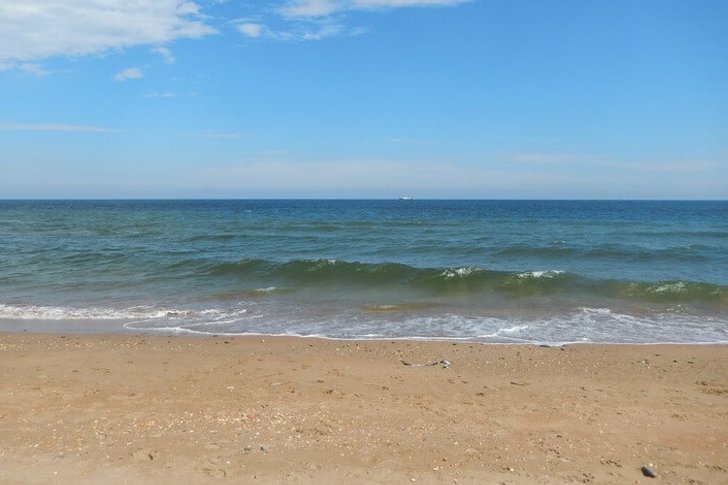Derbent is the oldest city in Russia. Its name translates as "shuttered gates" and is associated with the location. Derbent was the frontier between "Forward Asia" and Eastern Europe, preventing uninvited guests from passing inland. In memory of the defensive functions of the city, the Naryn-kala citadel has been preserved. It was duly appreciated in the international arena and included in the UNESCO World Heritage List.
Another feature of Derbent of the past is the ability to get along side by side with different peoples and representatives of many religions. A tour of the city, sandwiched between the mountains and the Caspian Sea, will help to make sure of this. Juma Mosque - the oldest in the CIS, the restored synagogue, the building of the Armenian church and the only surviving Orthodox church will tell about the cultural diversity of Derbent.
What to see and where to go in Derbent?
The most interesting and beautiful places for walking. Photos and a short description.
- Naryn-kala citadel
- Juma Mosque
- Church of the Holy Savior
- Church of the Intercession of the Holy Mother of God
- Synagogue Kele-Numaz
- Lezgi Drama Theater
- House of Peter I
- Museum of Carpet and Decorative and Applied Arts
- Museum of Culture and Life of Ancient Derbent
- Museum of the History of World Cultures and Religions
- House-Museum of Bestuzhev-Marlinsky
- Military Glory Park
- Derbent lighthouse
- Derbent embankment
- Caspian Sea
Naryn-kala citadel
Erected in the VIII-XVI centuries and used for defense. Building on a hill gave additional advantages. In addition, the citadel blocked the isthmus, preventing uninvited guests from Persian lands from passing freely. Naryn-kala occupies 4.5 hectares and has an irregular shape. Buildings from different periods, such as baths, have been preserved on its territory. The citadel is included in the UNESCO World Heritage List.
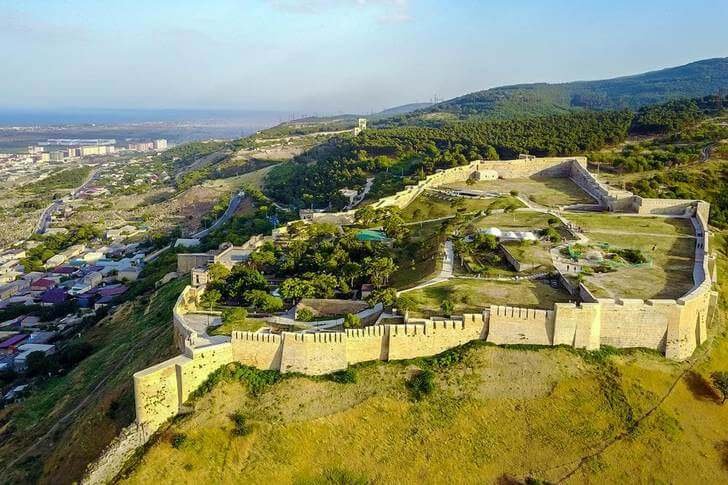
Juma Mosque
The oldest mosque in the CIS. Despite the construction in the VIII century, the current appearance was formed in stages. Both cosmetic and major changes have been made. For example, in the 14th century the mosque was restored after an earthquake. Under Soviet rule, the building was used as a prison. Services resumed in 1943. The courtyard is decorated with a natural monument - 4 perennial plane trees.
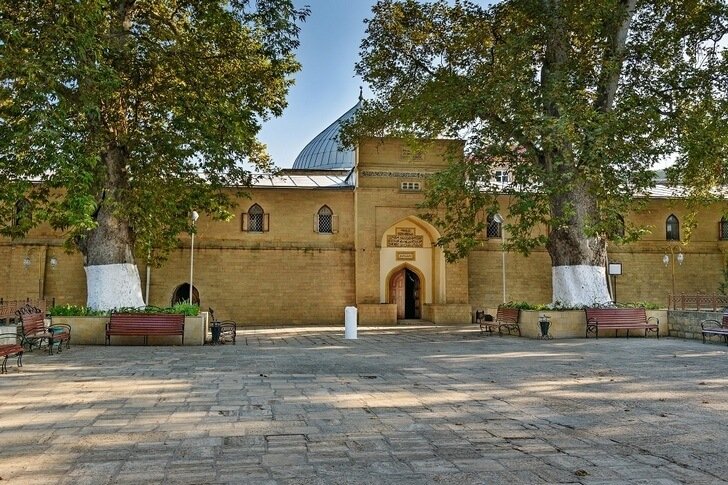
Church of the Holy Savior
The Armenian Church existed in the city from the second half of the 19th century to 1920. It was built on the site of an old chapel designed by the exiled writer Gabriel Sundukyan. During the Civil War, the building was badly damaged. In 1975, the temple was recognized as an architectural monument. A few years later, a large-scale restoration was carried out. Baptisms and weddings sometimes take place here.

Church of the Intercession of the Holy Mother of God
Built at the turn of the XIX-XX centuries. It is the only Orthodox church in the city. It was originally built as a parish school. But as a result, two buildings were erected to separate the church and the educational building. For several years, until 1943, the temple was closed and did not receive parishioners. Not so long ago, the bell tower and the church house were opened. In 2009, a new iconostasis was installed.

Synagogue "Kele-Numaz"
Derbent in the century before last was a very ethnically and religiously diverse city. Its flat part was occupied by Jews. A synagogue was built on the main street of their district in 1914. Restoration was carried out in 2009. The building was dismantled and rebuilt, combining old and new materials. So the historical features were preserved, and the strength of the structures increased. The reopening took place a year later.
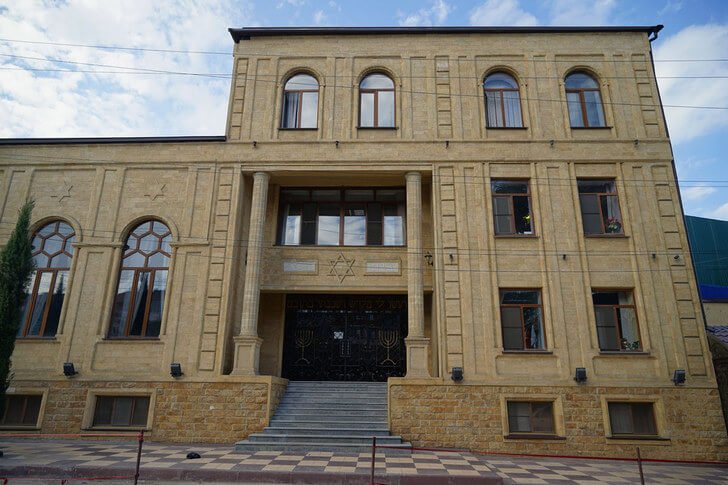
Lezgi Drama Theater
It was created on the basis of an amateur drama circle. The spectators of the first performance were only men. An attempt to give access to the hall and women led to the disruption of the performance by the Muslim clergy. Since its founding in 1905, the theater has repeatedly faced bans. The troupe received a permanent building only in 1927, before that giving performances in the fortress or in the villages.

House of Peter I
Initially, this place was a dugout, where the emperor stayed during the Persian campaign in 1722. Subsequently, the complex grew: now there is a pavilion-colonnade, a monument to Peter I, a museum and what is left of the dugout. The object was seriously damaged after the revolution. The dugout went deeper into the ground, and the pavilion was turned into a residential building. In its current form, the attraction has existed since 2015.
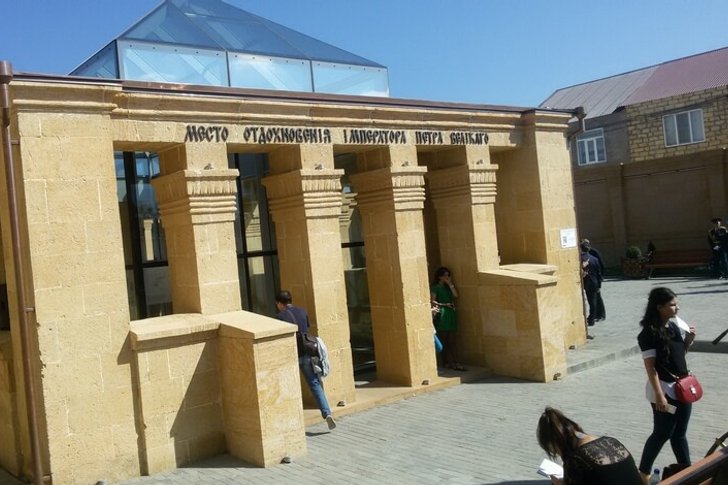
Museum of Carpet and Decorative and Applied Arts
The opening took place in 1982. The collection is exhibited in a building where there was an Armenian church in the past. Carpets are the basis of the exposition, but there are also other interesting exhibits. Products made of silver, copper and wood show how talented local craftsmen are. Samples of decorative and applied art are brought to the museum from the most remote corners of the republic. The still modest funds are replenished every year.

Museum of Culture and Life of Ancient Derbent
The exposition occupies the building of an architectural monument called "The Maiden's Bath". Only unmarried girls could visit this place. The baths functioned until the middle of the 20th century, and in 1992, after restoration, they became a museum. The interior decoration has been preserved. Special mannequins are installed to show some of the rites of the past. During the tour, they talk about the procedures carried out in the baths.
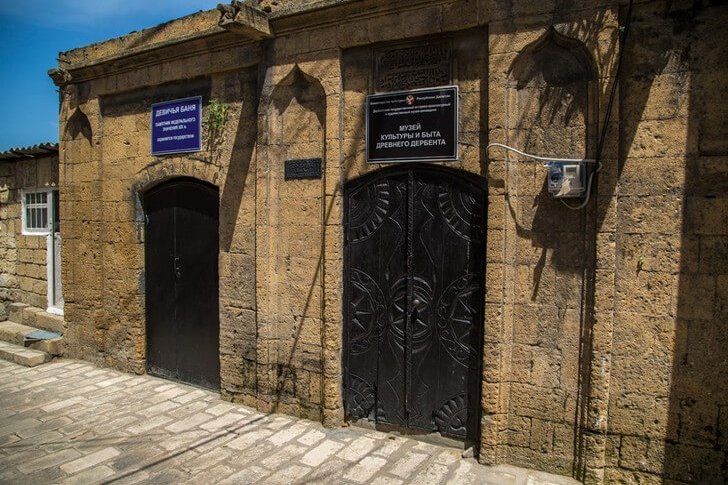
Museum of the History of World Cultures and Religions
Since ancient times, Derbent has been known as a very diverse city in terms of religions and nationalities. In memory of those times when representatives of all faiths and people from different parts of the world lived in peace, a museum was opened in 2014. The basis of the exposition is national costumes, religious objects, paintings on the relevant topics. Several special programs have been developed for school-age children.

House-Museum of Bestuzhev-Marlinsky
The exposition is housed in a late 18th-century building, a classic example of residential architecture of that period. Alexander Bestuzhev-Marlinsky - writer and Decembrist. He was engaged in ethnography and used the found materials for his works. The exhibition is dedicated not only to the work of the writer, but also to everyday life. The decor in the house has been preserved, and also supplemented with exhibits that are suitable for the theme.
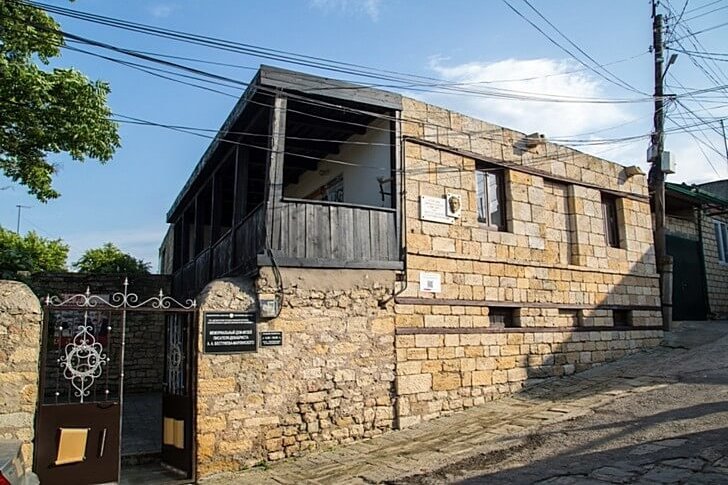
Military Glory Park
The park has been extensively renovated. In a new form, it opened in 2015 on the eve of Victory Day. The main elements are the alley of heroes of the Great Patriotic War, a fountain and a memorial. The latter is called "Grieving Mother" and looks like a sculpture of a woman stretching out her hands in prayer, with three cranes above her head. The Eternal Flame burns in front of the bronze monument.
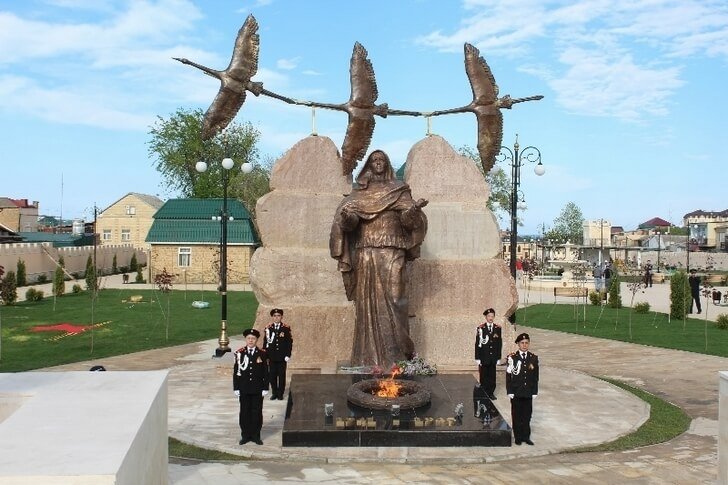
Derbent lighthouse
Although the city has been used as a port since ancient times, there is no information about lighthouses in the chronicles. The current lighthouse appeared in Derbent in 1853. Its height exceeds 18 meters. After the Russian-Persian war in the Caspian Sea, trade began to develop at a rapid pace, so the lighthouse was necessary and really made life easier for sailors. It still remains active. Included in the UNESCO World Heritage List.

Derbent embankment
The territory began to be ennobled in connection with the celebration of the 2000th anniversary of the founding of the city. The length of the embankment is 780 meters, the width varies from 20 to 130 meters. This is not just a walking area. On an area of 8.6 hectares, children's and sports grounds, places for mass events were created, floorings for cyclists and convenient sidewalks for pedestrians appeared. The project has not yet been completed.
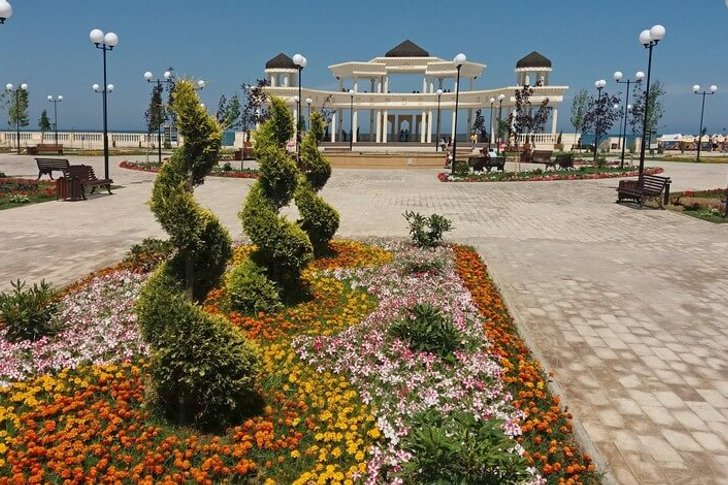
Caspian Sea
Because of its size, the endorheic lake became known as the sea. Its area is about 371 thousand km², and the average depth is 208 meters. Among the many islands, more than 50 of the largest stand out. Thanks to the beaches, therapeutic mud and springs, there is an opportunity to attract tourists to the Caspian Sea, but the infrastructure is still poorly developed.
